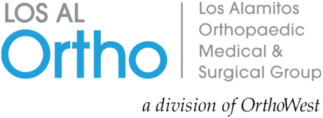Arthroscopy is a minimally invasive surgical technique that involves making several small incisions and inserting a fiber-optic device (arthroscope) and tiny surgical instruments to diagnose or treat certain conditions. Connected to a camera that displays images of the internal structure of the shoulder on a computer screen, the arthroscope allows the surgeon to precisely identify and target joint abnormalities. Orthopedic surgeons may perform a shoulder arthroscopy to diagnose and treat several different conditions of the shoulder. With this type of procedure, patients benefit from less tissue damage, shorter recovery times, less scarring and less post-operative pain than traditional open procedures. The use of this technique also avoids cutting any muscles or tendons in order to gain access to the affected area. Arthroscopy is an ideal treatment option for many patients suffering from shoulder conditions.
Candidates For Shoulder Arthroscopy
Shoulder arthroscopy, also known as shoulder scope, is often performed to confirm a diagnosis after a physical examination and other imaging tests have been performed. Some shoulder conditions may also be treated during the same procedure by inserting a few additional instruments into the joint area. Arthroscopy may be used to treat conditions that affect the shoulder joint which may include:
- Rotator cuff tears
- Labral tears
- Impingement syndrome
- Tendonitis
- Bursitis
- Joint arthritis
Arthroscopy provides many benefits over traditional open shoulder surgery, including smaller incisions, less trauma and shorter recovery times.
The Shoulder Arthroscopy Procedure
The shoulder arthroscopy procedure is performed while the patient is sedated under general anesthesia, and is usually performed on an outpatient basis. During the procedure, the surgeon will insert the arthroscope into a tiny incision in order to thoroughly examine the cartilage, bones, tendons and ligaments within the joint. Any damaged areas may be repaired during the same procedure by making several other small incisions through which surgical instruments are inserted. The type of repair performed will depend on the patient’s individual condition, but may include removing inflamed tissue, reattaching torn tissue or replacing damaged cartilage. Once the repair is completed, the incisions will be closed with stitches and a dressing will be applied to the area.
Risks Of Shoulder Arthroscopy
While arthroscopy is considered safer and less invasive than traditional surgery, there are risks associated with this procedure which may include:
- Bleeding
- Blood clots
- Shoulder stiffness
- Shoulder weakness
Nerve damage and infection are also possible complications associated with the shoulder arthroscopy procedure.
Recovery From Shoulder Arthroscopy
After surgery, patients can usually return home the same day, although an overnight hospital stay may be required in some cases. Patients are encouraged to ice the shoulder and keep it immobilized in a sling for about a week. Some patients experience mild to moderate pain after this procedure, and medication is often prescribed to control pain. Most patients can return to work within a few days after their procedure, although physical activity may be limited for a longer period of time. Full recovery from the shoulder arthroscopy procedure may take anywhere from one to six months, depending on each patient’s individual condition. A physical rehabilitation program helps patients restore function to the joint and ensure that it heals properly.
Once the shoulder has fully healed, most patients experience restored function, pain relief, improved range of motion and improved stability of the shoulder.

